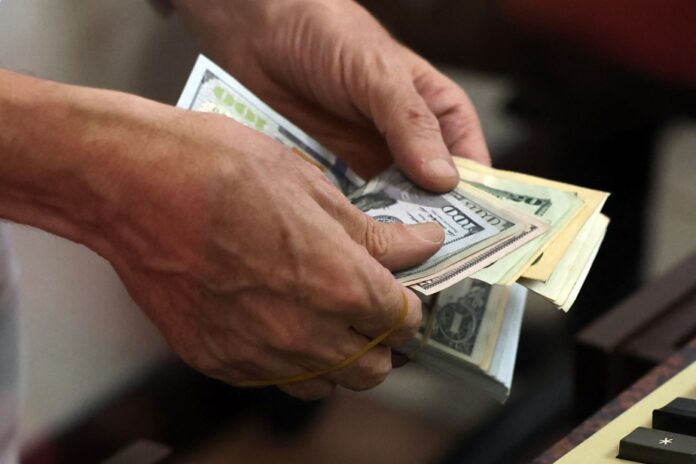(Washington) US inflation resumed accelerating in July after two months of slowdown, as did consumer spending, despite efforts by the US central bank, the Fed, to dampen economic activity and try to ease the pressure on prices.
Consumer price inflation was 3.3% year-on-year compared to 3.0% in June, and was stable over a month, at 0.2%, according to the PCE index, the measure favored by the Fed.
“Goods prices fell 0.3% and services prices rose 0.4%,” said the Commerce Department, which released the data Thursday.
Excluding volatile energy and food prices, so-called core inflation also accelerated, to 4.2% over one year from 4.1% in June. It is this measure that the Fed wants to reduce to 2.0%.
Inflation measured by the PCE follows the same trend as that of the CPI index, published earlier in the month. CPI inflation had climbed to 3.2% year on year in July, from 3.0% in June.
The question now is whether or not the Fed will continue to raise policy rates, as it has done 11 times since March 2022, taking them to a 22-year high.
As a result, banks offer loans at higher rates to households and businesses, which are less inclined to consume or invest, which eases pressure on prices.
“A broader slowdown in demand has not occurred despite the sharp rise in interest rates,” said Ben Ayers, economist for Nationwide Insurance Company.
And for him, “even more worrying is a further rise in the underlying PCE, as housing and utility costs appear unaffected by Fed rate hikes.” This could “put another rate hike back on the agenda” at the Fed’s next meeting in late September.
By contrast, Gregory Daco, chief economist for EY, expects “the Fed’s tightening cycle to be over” because, while rising incomes “have ensured the resilience of consumer spending over the past year, the momentum appears to be reversing as employment and wage growth slow.”
Economic activity has indeed withstood this forced slowdown.
Household spending also increased faster in July (0.8% compared to 0.6% in June), in particular to pay for financial and insurance services, as well as rents which have soared since the pandemic, or still buy pharmaceuticals or hobby items.
But their incomes increased less than in June (0.2% against 0.3%).
And from October, the many Americans who had taken out student loans will have to start repaying again, after a three-and-a-half-year hiatus related to COVID-19.
This will “likely weigh heavily on consumption in the fourth quarter,” warns Ian Shepherdson, chief economist for Pantheon Macroeconomics, especially as “more than three-quarters of excess savings accumulated during the pandemic have now been spent.”
US employment figures for August will be released on Friday. A slowdown in hiring is expected, as well as rising wages.
This would signal an improvement in the situation on the labor shortage front that the country has been experiencing for more than two years, and which had contributed to the surge in inflation.
In the euro zone, inflation remains higher than in the United States, and remained stable in August at 5.3% year on year, according to data also published Thursday, by Eurostat.















